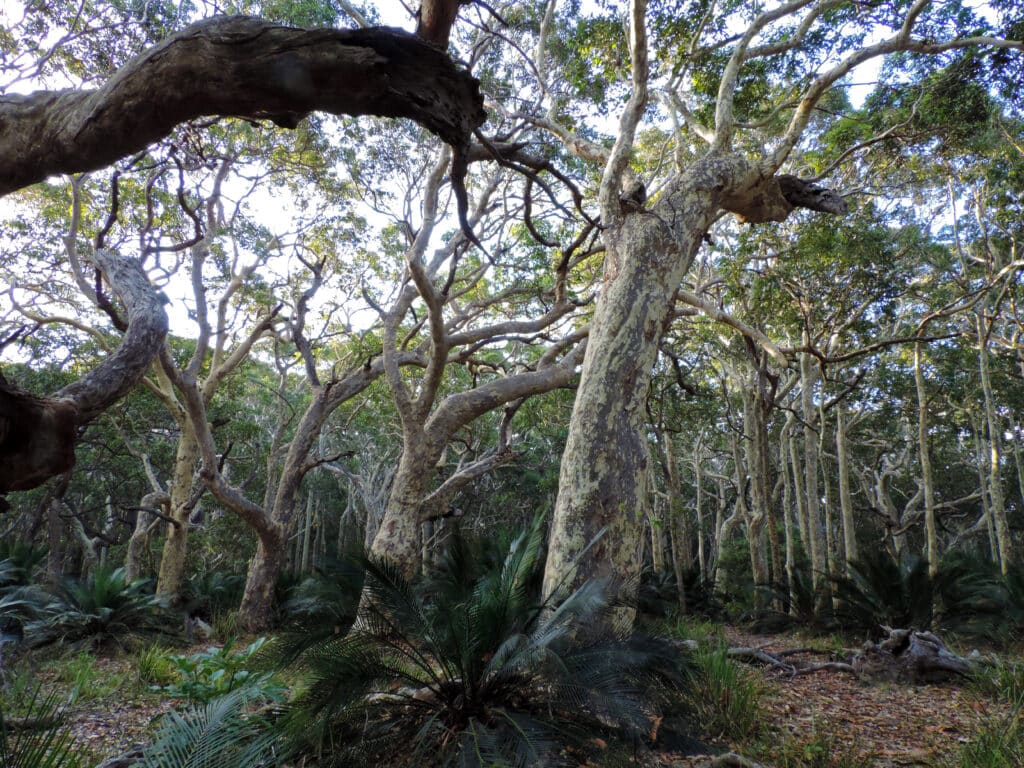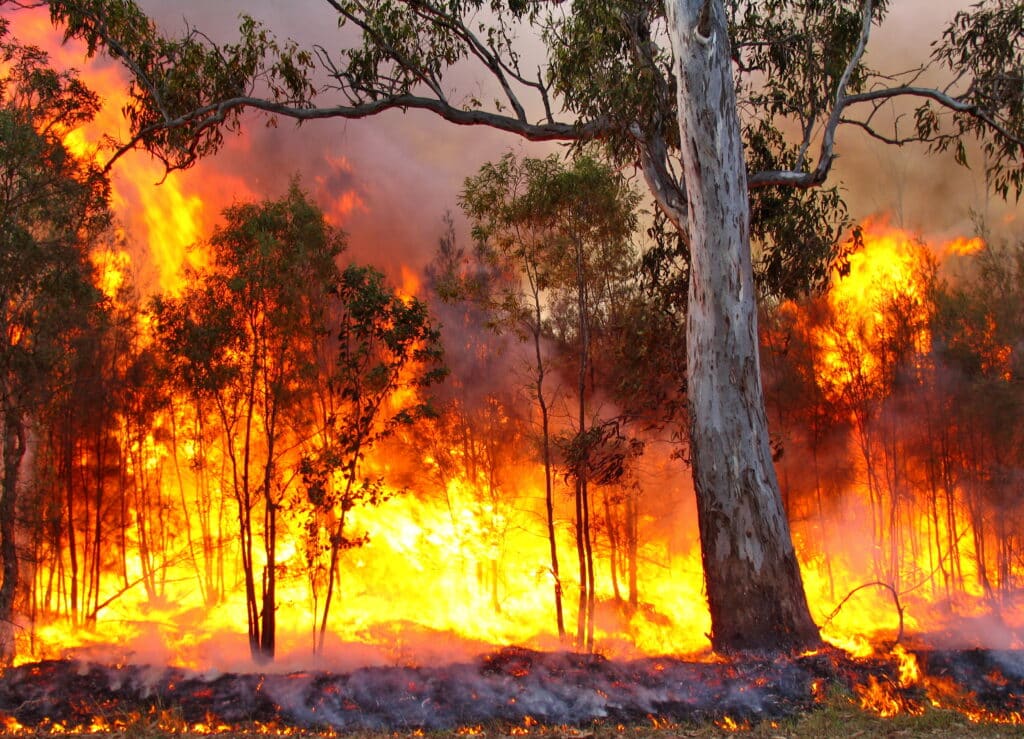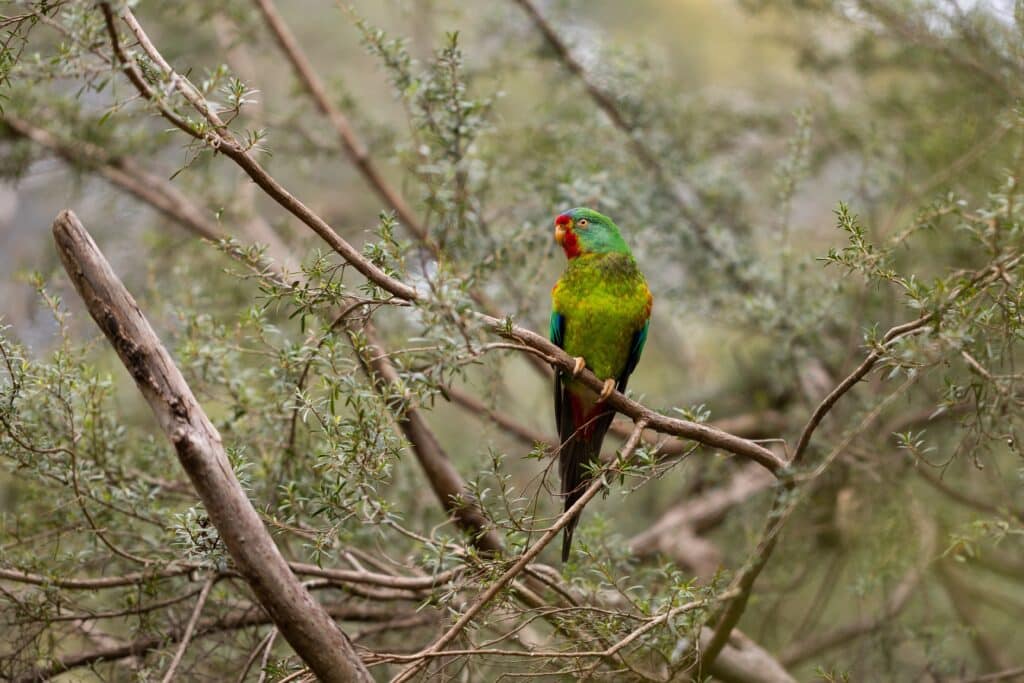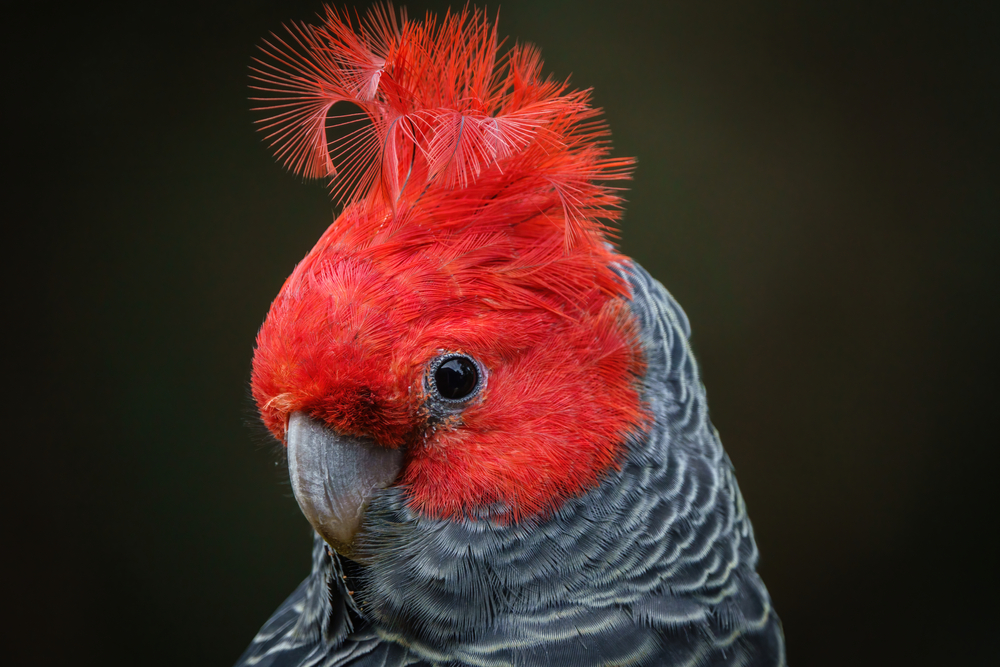Green shoots from the ashes

The Australian ‘Black Summer’ bushfires of 2018-19 blazed across vast areas of Australia, including over a third of the Ulladulla to Merimbula Key Biodiversity Area (KBA), severely impacting several threatened bird species. Now, ongoing logging is hampering the forest's recovery, as well as jeopardising areas untouched by the inferno.
When the catastrophic ‘Black Summer’ bushfires of 2019-20 raged across vast swathes of eastern Australia’s eucalypt forests, millions of birds perished in the inferno. But it is our actions in the aftermath of the fires that will determine whether birds that rely on these magnificent forests, such as the Critically Endangered Swift Parrot, will be able to rise from the ashes.
As devastating as the scale of these unprecedented fires was, Australia’s forests and wildlife are resilient and capable of clawing their way back to restoring balance if given the chance. Intensively logging these forests as they attempt to recover, however, is the last thing they need.
Yet, unbelievably, this is exactly what’s happening in the stately Spotted Gum forests of the Ulladulla to Merimbula Key Biodiversity Area (KBA), a 230-km stretch of tall eucalypt forest on the southern coast of New South Wales.
Over 30 per cent of the Ulladulla to Merimbula KBA was impacted by the Black Summer fires, yet the New South Wales government insists on subsidising and promoting the logging of native forests in the region, an economically unviable practice that has devastating consequences for wildlife, human life, property and livelihoods.
This forest was declared a KBA because of its significance to the Critically Endangered Swift Parrot, one of the only parrots in the world that migrates annually, flying from their Tasmanian nesting sites to take advantage of profusely flowering eucalypts on the mainland during winter.
As recently as 2012, local volunteers counted 1,200 Swift Parrots – almost double the estimated population that remains today – in a Spotted Gum forest during BirdLife Australia’s long-term winter Swift Parrot monitoring project. Within a few months, that very site had been logged. The birds have not returned since, yet the logging continues.

Header image: The Ulladalla to Merimbula KBA runs along the southeast coast of Australia ©️ Victoria Tucholka/Shutterstock
A recent analysis of the Black Summer fires by the Australian National University found that logging amplified the severity of their impact compared to unlogged forests. With climate change ushering in hotter and drier conditions, the continued logging of native forests is therefore a double threat, directly causing habitat loss while also jeopardising untouched remnants through increasing the ferocity of future fires spreading from recently logged areas.
It is not only Swift Parrots that are at risk in the Ulladulla to Merimbula KBA. BirdLife Australia has identified a further seven forest bird species severely impacted by these fires, including Gang-gang Cockatoo, common before the bushfires but uplisted to Vulnerable to extinction on the IUCN Red List in 2022.
BirdLife Australia has been working with dedicated local residents in a campaign against these avoidable losses and is providing an alternative vision for the region, where these bird-rich forests are protected and celebrated as being vital, both for healthy bird populations and human communities. Submissions and appearances have been made to a New South Wales Parliamentary Committee inquiry into native forest logging. More than 20,000 BirdLife supporters rallied to sign a petition that has forced a parliamentary debate on the native logging issue.
In BirdLife Australia’s 2022 Birds and Nature Tourism Report, the Ulladulla to Merimbula KBA featured as a case study that found bird-related tourism already brought in up to AUS$1.1 million per year. This valuable and sustainable income stream will be lost, along with the destruction of native forests and the Swift Parrots and Gang-gang Cockatoos that depend on them for their survival.

Swift Parrot (Lathamus discolor)
One of only two parrots whose entire population migrates annually, this bright green, nectar-feeding species nests in tall eucalypt forests in Tasmania before journeying across the Bass Strait, where it roams across the forests and woodlands of south- eastern Australia in search of eucalypt blossom. Logging of the parrot’s forest habitat both in Tasmania and the mainland is the prime cause for its catastrophic population decline to fewer than 700 birds.

Gang-gang Cockatoo (Callocephalon fimbriatum)
This small cockatoo was already significantly declining before the Black Summer bushfires, but is estimated to have suffered a further decline of 21 per cent because of them. The Action Plan for Australian Birds 2020, co-published by BirdLife Australia, identified that logging of its native nesting habitats, including those in the Ulladulla to Merimbula KBA, was the prime cause of these pre-fire declines. Yet still the logging of remaining native forest habitat continues apace.